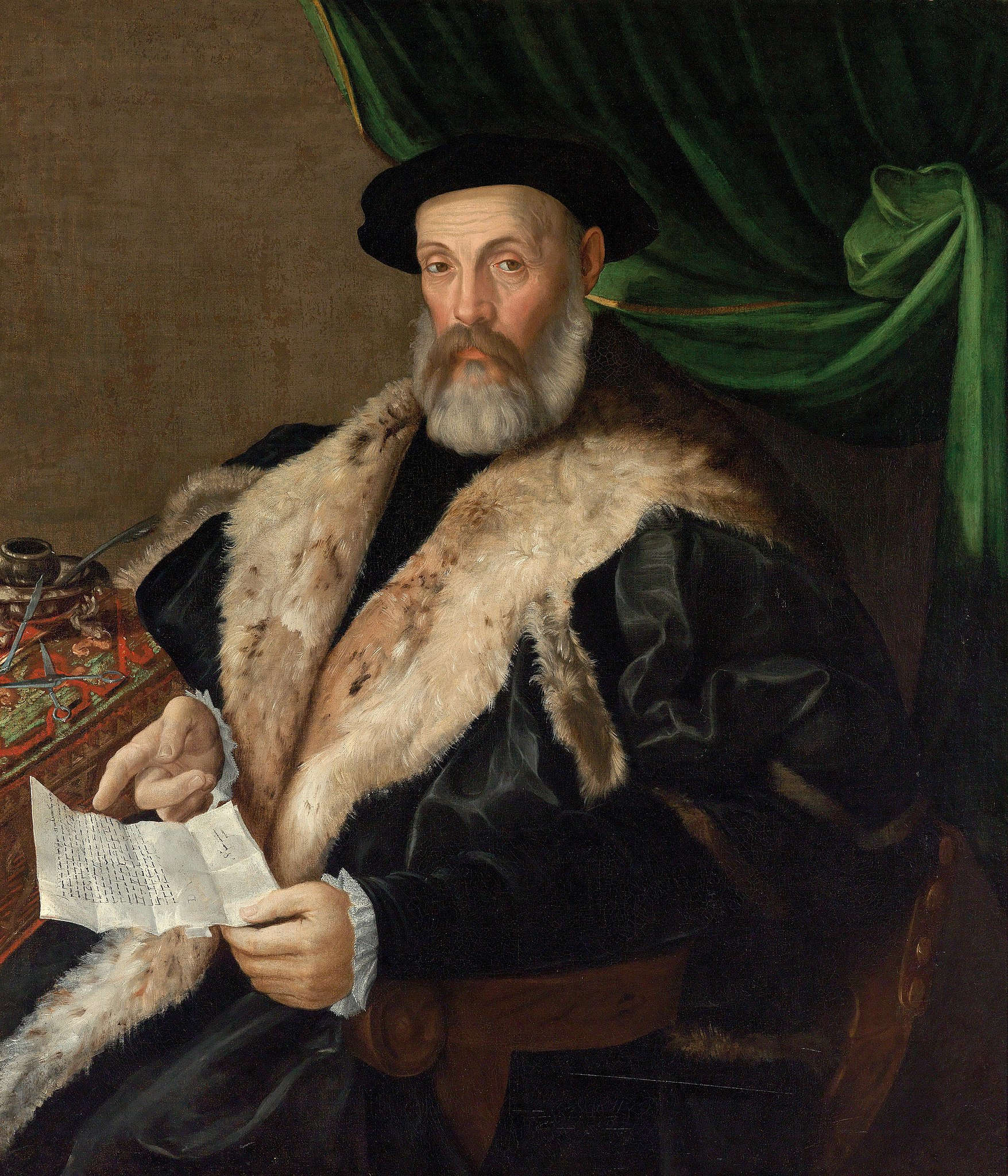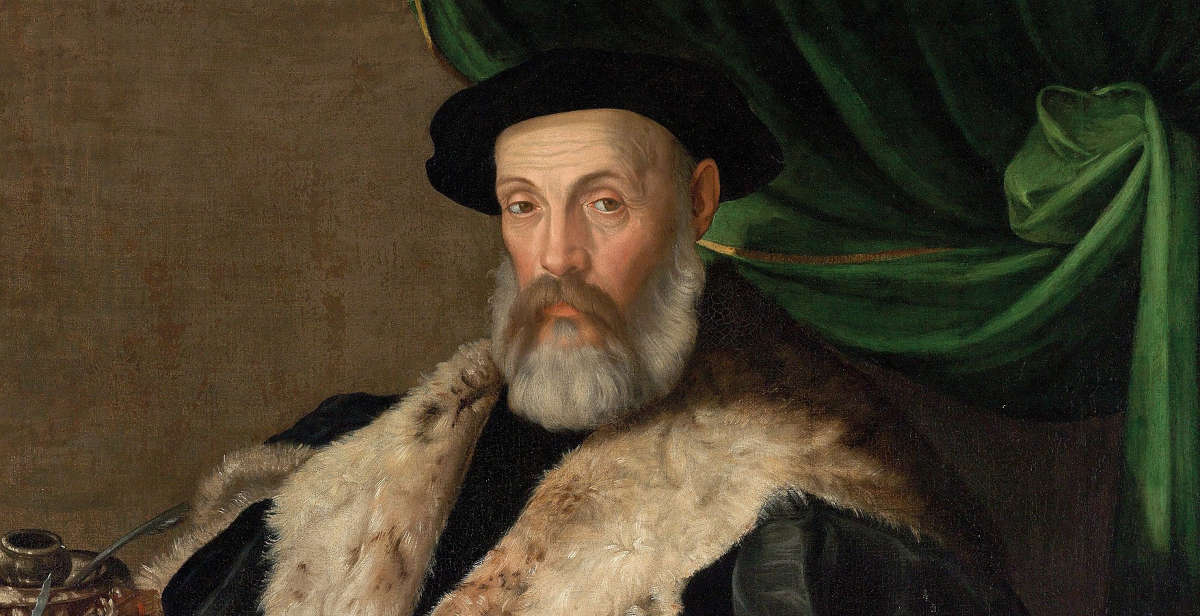The Regional Administrative Tribunal for Lazio has definitively banned the export of the Portrait of an Elderly Gentleman with Fur Coat and Collar, a work attributed to Bolognese Mannerist Prospero Fontana (Bologna, 1512 - 1597). The Superintendency of Milan, accepting the study of art historian Vera Fortunati, who calls the work a “splendid example of a set portrait,” has in fact placed a lien on the canvas, recognizing its artistic, historical and cultural value: the Superintendency’s lien stipulates that the work cannot leave national borders.
The work’s legal process began on December 18, 2018, when the owner applied for a certificate of free movement from the Milan Superintendency, which is necessary to export the work. On January 25, 2019, the denial notice arrived. Despite the owner’s submission of comments, the ban was confirmed on July 25, 2019. The owner then filed a hierarchical petition against the measure and subsequent appeal to the Regional Administrative Court, referring to a certificate of free movement that had already been issued to her by the Florence Export Office in December 2014. According to the owner’s attorneys, in fact, the certificate, which was valid for five years, was still valid when she submitted the request to the Milan superintendency.
However, the judges noted that at that time the certificate’s validity was three years, as stipulated by Legislative Decree 42/2004, while the eventual extension to five years only came into effect on August 29, 2017. This means that by the time of the new application, the certificate had already expired. The TAR panel, chaired by Maria Barbara Cavallo, also found that there would be no reason to apply for a new certificate if the previous one was still valid. It therefore confirmed that the bureaucratic process had to be repeated from scratch, making the denial legitimate.

The value of the work, which measures 113×96 centimeters, was also highlighted by the intervening experts. The court emphasized the “ethical” precision in Prospero Fontana’s rendering of the figure, with optical tools that enhance the balance between grandeur and naturalness. The interior portrayed is dominated by an elegant calm, made visible by the wavy green curtain and the Holbein carpet, a symbol of Renaissance wealth and culture, on the table on which are a pen and an inkwell. In this painting, adherence to the authenticity of the portrait, as prescribed by Bolognese Cardinal Paleotti, is achieved with refined stylistic touches. The character depicted expresses the intention to portray a role that conforms to his social condition in an image that manages to combine an image at once impressive and natural. The realism, which suggests a knowledge of northern European and Flemish models, is also accompanied by a penetrating psychological investigation.
According to the judges, the work constitutes “a splendid document” of the great quality of Bolognese portraiture between the seventh and eighth decades of the sixteenth century, in which Fontana stands out alongside the younger Bartolomeo Passerotti. A relevant example of Bolognese portraiture of the 1660s-1970s.
The property argued that the work was not rare, but the Regional Administrative Court clarified that rarity should not be understood exclusively in numerical terms, but in terms of cultural relevance: in this context, even a single high quality specimen may merit special protection. The constraint, while prohibiting the work’s expatriation, does not exclude private possession, leaving the way open for possible agreements with museums or galleries for a public exhibition or eventual definitive acquisition by a cultural institution, or at any rate for sale in Italy. On the other hand, the problem is that the constraint does not set, as happens in other countries, time limits to allow a public body to buy the work at market price: this is one of the features that collectors and gallery owners most criticize about the Italian system, which is very different from the French or English system where notification of cultural interest always has a time limit. The constraint also prevents it from being sold to a collector intent on taking the painting outside Italian borders. This means fewer potential buyers of the work, whose value can be estimated in the tens of thousands of euros: the painting went through an auction at Dorotheum in Vienna in 2015 and sold for 137,200 euros, starting from an estimate of 100-150 thousand.
Prospero Fontana, a pupil of Innocenzo da Imola and collaborator of Perin del Vaga, was introduced by Michelangelo to Pope Julius III and became one of the most highly regarded painters of his time. An excellent portraitist, he made precision in the psychological and social rendering of the subject one of the foundations of his art; qualities he passed on to his daughter Lavinia, also a successful portraitist.
In conclusion, the Portrait of an Elderly Gentleman with Coat and Fur Collar has been recognized as an excellence of 16th-century portraiture, and with the constraint imposed by the superintendency and confirmed by the Lazio Regional Administrative Court, the work remains in Italy. It is not certain, however, that the affair is over: in fact, the road to an appeal to the Council of State is open.
 |
| Constraint on Prospero Fontana's painting: portrait of elderly gentleman remains in Italy |
Warning: the translation into English of the original Italian article was created using automatic tools. We undertake to review all articles, but we do not guarantee the total absence of inaccuracies in the translation due to the program. You can find the original by clicking on the ITA button. If you find any mistake,please contact us.